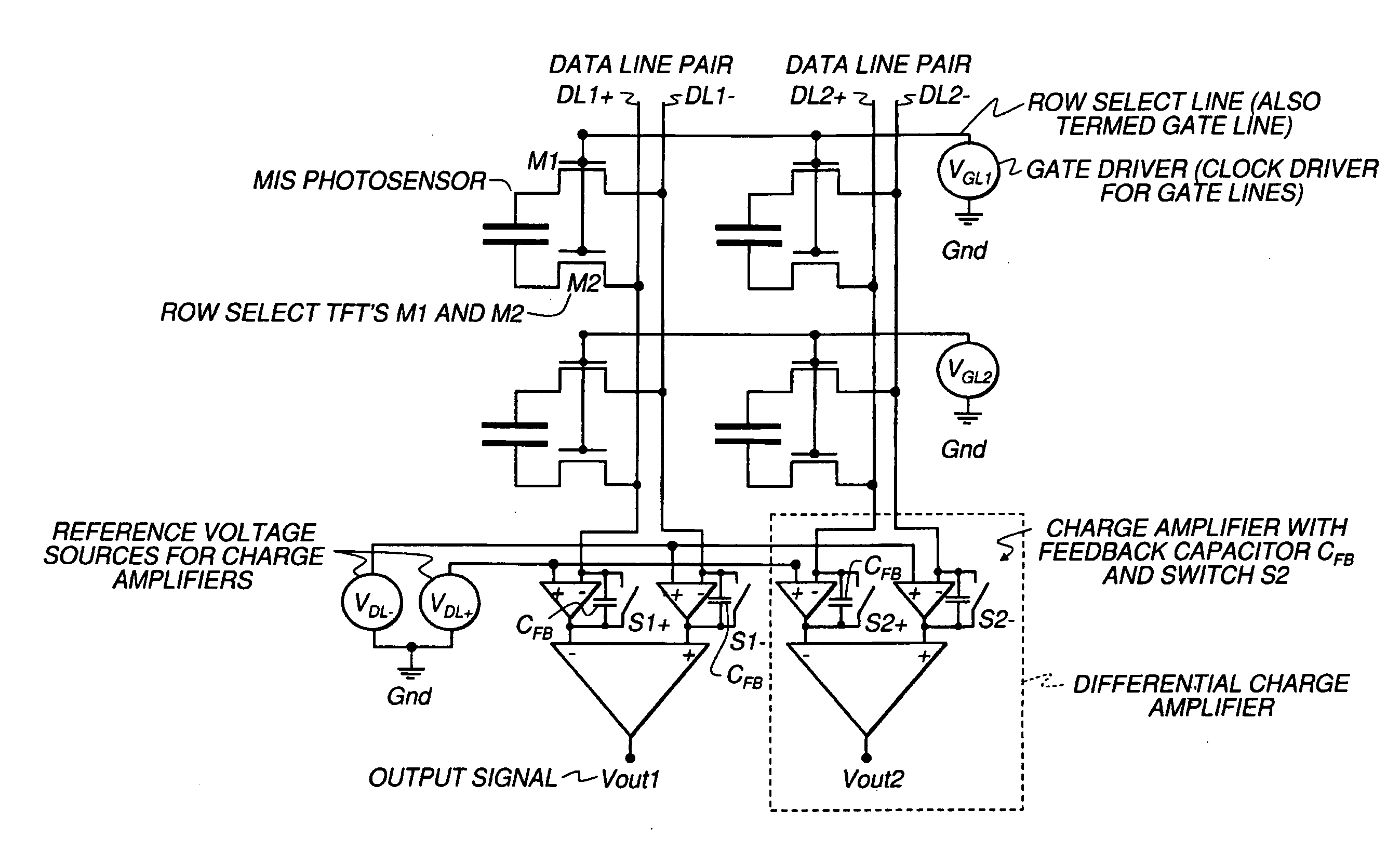Digital radiographic imaging apparatus
a radiographic and digital technology, applied in the field of digital radiographic imaging, can solve the problems of affecting performance, affecting the performance of conventional imaging arrays, and affecting the charge amplifier of conventional circuit arrangements, so as to reduce the effect of common-mode nois
- Summary
- Abstract
- Description
- Claims
- Application Information
AI Technical Summary
Benefits of technology
Problems solved by technology
Method used
Image
Examples
Embodiment Construction
[0044]It is to be understood that elements not specifically shown or described may take various forms well known to those skilled in the art.
[0045]The schematic diagram of FIG. 3A, illustrated above, showed the conventional charge amplifier arrangement for a 2 column×4 row portion of an array using MIS photosensors and FIG. 3B showed the conventional architecture for a 2 column×4 row portion of an array using PIN photodiodes. In these arrangements, the charge amplifiers typically are located off-panel and connected through a flexible connector or other means. They have a connection to a bias voltage and to the switched signal from a switching element connected to a terminal of photodiode 40 or other photosensor. The second terminal of photodiode 40 can be connected to a bias voltage, with the difference between the first and second bias voltages being the reverse bias set across the photodiode when the gate line is turned on.
[0046]By comparison with Figures A and 3B, FIG. 4A shows a...
PUM
 Login to View More
Login to View More Abstract
Description
Claims
Application Information
 Login to View More
Login to View More - R&D
- Intellectual Property
- Life Sciences
- Materials
- Tech Scout
- Unparalleled Data Quality
- Higher Quality Content
- 60% Fewer Hallucinations
Browse by: Latest US Patents, China's latest patents, Technical Efficacy Thesaurus, Application Domain, Technology Topic, Popular Technical Reports.
© 2025 PatSnap. All rights reserved.Legal|Privacy policy|Modern Slavery Act Transparency Statement|Sitemap|About US| Contact US: help@patsnap.com



